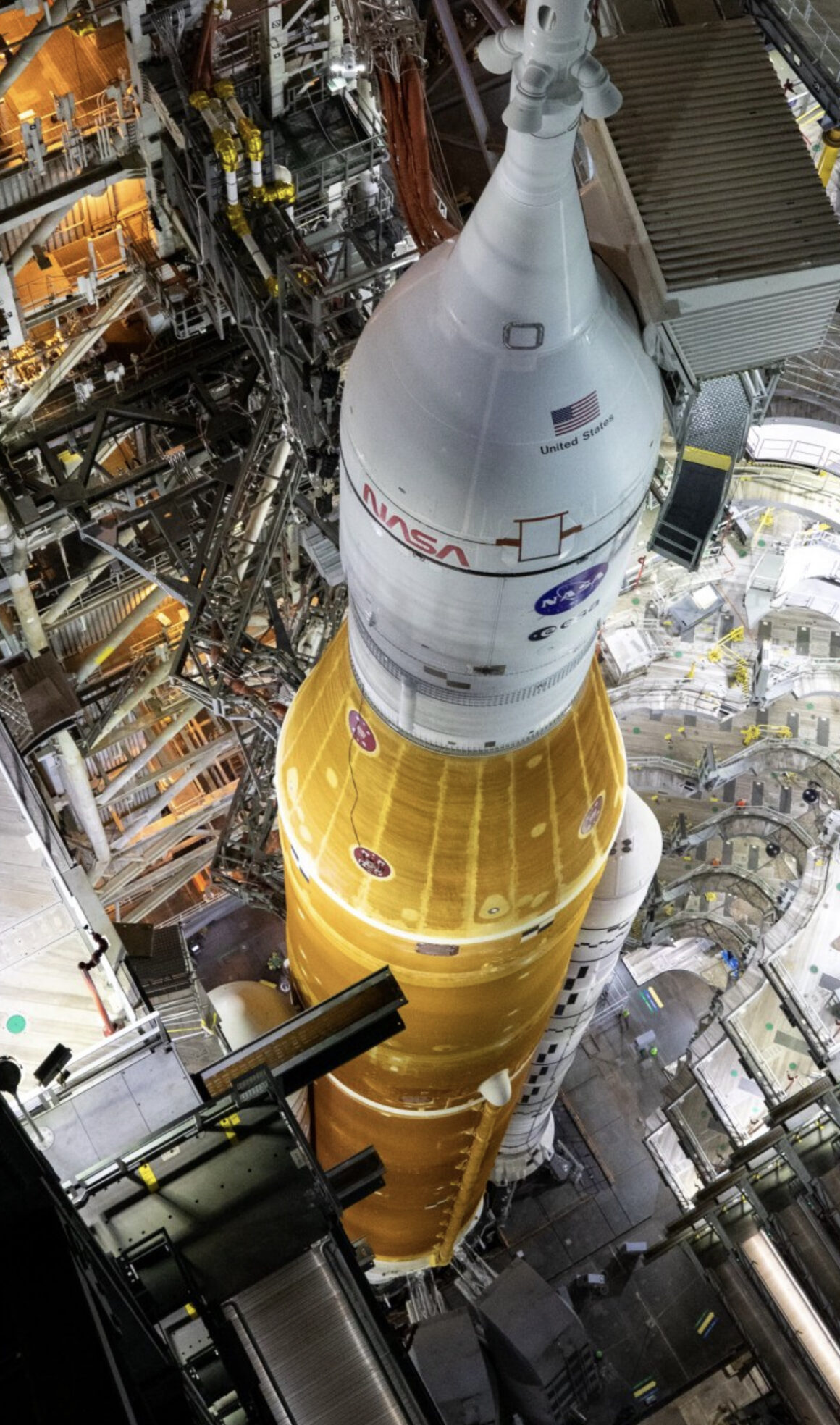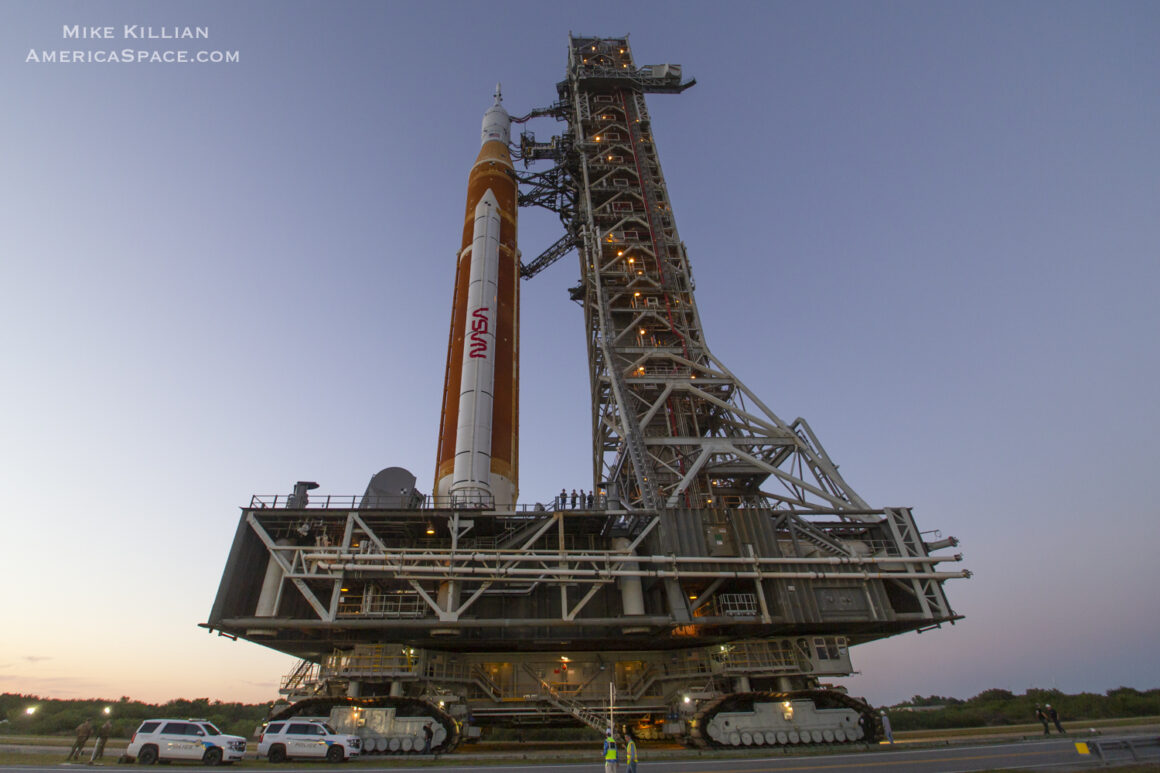NASA is all systems GO to roll-out the world’s most powerful rocket on Tues night (Aug 16) at Kennedy Space Center in Florida, where it is set to launch Aug 29 with the maiden voyage in a new era of human spaceflight to return astronauts to the moon this decade.
Artemis’ Maiden Voyage To The Moon’s Orbit
The new program is called Artemis, after Apollo’s twin sister and Goddess of the Moon in Greek mythology. This first mission is called Artemis-1, and will launch on a giant new rocket called the Space Launch System (SLS) to send a new spacecraft, called the Orion crew capsule, farther than any spacecraft for humans has ever gone before.
The giant SLS is currently tucked inside a high bay in Kennedy’s iconic Vehicle Assembly Building (VAB), previously used to process Apollo Saturn-V moon rockets and space shuttles for flight.
Rollout Happening Tonight
First motion out of the VAB is scheduled for 9pm EDT. NASA will air it live online starting at 3 p.m. EDT Aug. 16 on the NASA Kennedy You Tube channel.

It’s only about 4 miles from the VAB to launch pad 39B, but the trip will take somewhere between 8-12 hours due to the sheer size of the mammoth 322-ft tall vehicle.
Even the behemoth transporter itself is a marvel of engineering, larger than a Major League Baseball infield and made to carry over 20 million pounds on its back.

The upcoming uncrewed flight will put SLS, Orion, and all the ground support personnel and infrastructure to the test to validate and prove that everything works, before NASA sends astronauts on Artemis-2.
Once launched, Artemis-1 will send Orion 280,000 miles from Earth and thousands of miles beyond the Moon on a mission lasting 4-6 weeks. Upon arriving at the moon, it will fly 62 miles above the surface, and then use the Moon’s gravity to propel it into a deep retrograde orbit 40,000 miles above the surface, where it will fly and test for 6 days.
Orion will then descend back into a low orbit and brush past the surface again at 60 miles to perform its engine firing to break away from the moon’s gravity, and then head back to Earth.
Orion will stay in space longer than any ship for astronauts has ever done without docking to a space station, and will return home faster and hotter than any before it.
